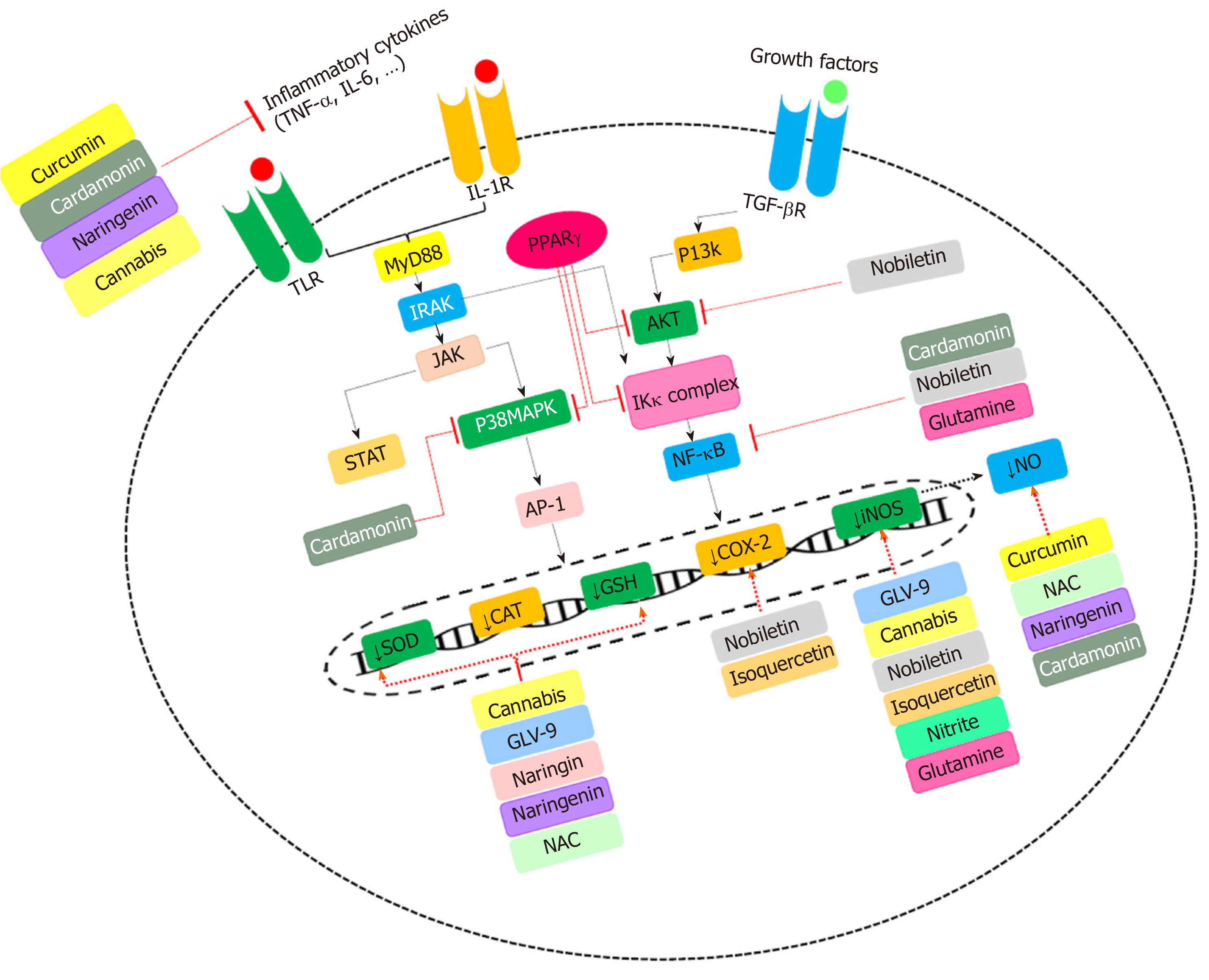Copyright
©The Author(s) 2020.
World J Gastroenterol. Jun 28, 2020; 26(24): 3365-3400
Published online Jun 28, 2020. doi: 10.3748/wjg.v26.i24.3365
Published online Jun 28, 2020. doi: 10.3748/wjg.v26.i24.3365
Figure 1 Main cellular mechanism of interventions in inflammatory bowel disease.
COX-2: Cyclooxygenase-2; iNOS: Inducible nitric oxide synthase; TNF-α: Tumor necrosis factor alpha; NF-κB: Nuclear factor kappa-light-chain-enhancer of activated B cells; IκB: Inhibitor of kappa B; IKκ complex: Inhibitor of kappa kinase complex; MyD88: Myeloid differentiation primary response 88; P38MAPK: P38Mitogen-activated protein kinase; GSH: Glutathione; P13k: Phosphatidylinositol 13-kinase; STAT: Signal transducer and activator of transcription proteins; IL-6: Interleukin-6; IL-1: Interleukin-1; PPARγ: Peroxisome proliferator-activated receptor gamma; TLR: Toll-like receptor; MCP-1: Monocyte chemoattractan-t protein-1; AP-1: Activator protein 1; IRAK: Interleukin-1 receptor-associated kinase; NAC: N-acetyl cysteine; NO: Nitric oxide; SOD: Superoxide dismutase; CAT: Catalase; TGFβR: Transforming growth factor beta receptor I.
Figure 2 Inhibition of nitric oxide synthase suppresses inflammatory bowel disease.
IBD: Inflammatory bowel disease; NOS: Nitric oxide synthase; NO: Nitric oxide.
- Citation: Kamalian A, Sohrabi Asl M, Dolatshahi M, Afshari K, Shamshiri S, Momeni Roudsari N, Momtaz S, Rahimi R, Abdollahi M, Abdolghaffari AH. Interventions of natural and synthetic agents in inflammatory bowel disease, modulation of nitric oxide pathways. World J Gastroenterol 2020; 26(24): 3365-3400
- URL: https://www.wjgnet.com/1007-9327/full/v26/i24/3365.htm
- DOI: https://dx.doi.org/10.3748/wjg.v26.i24.3365










